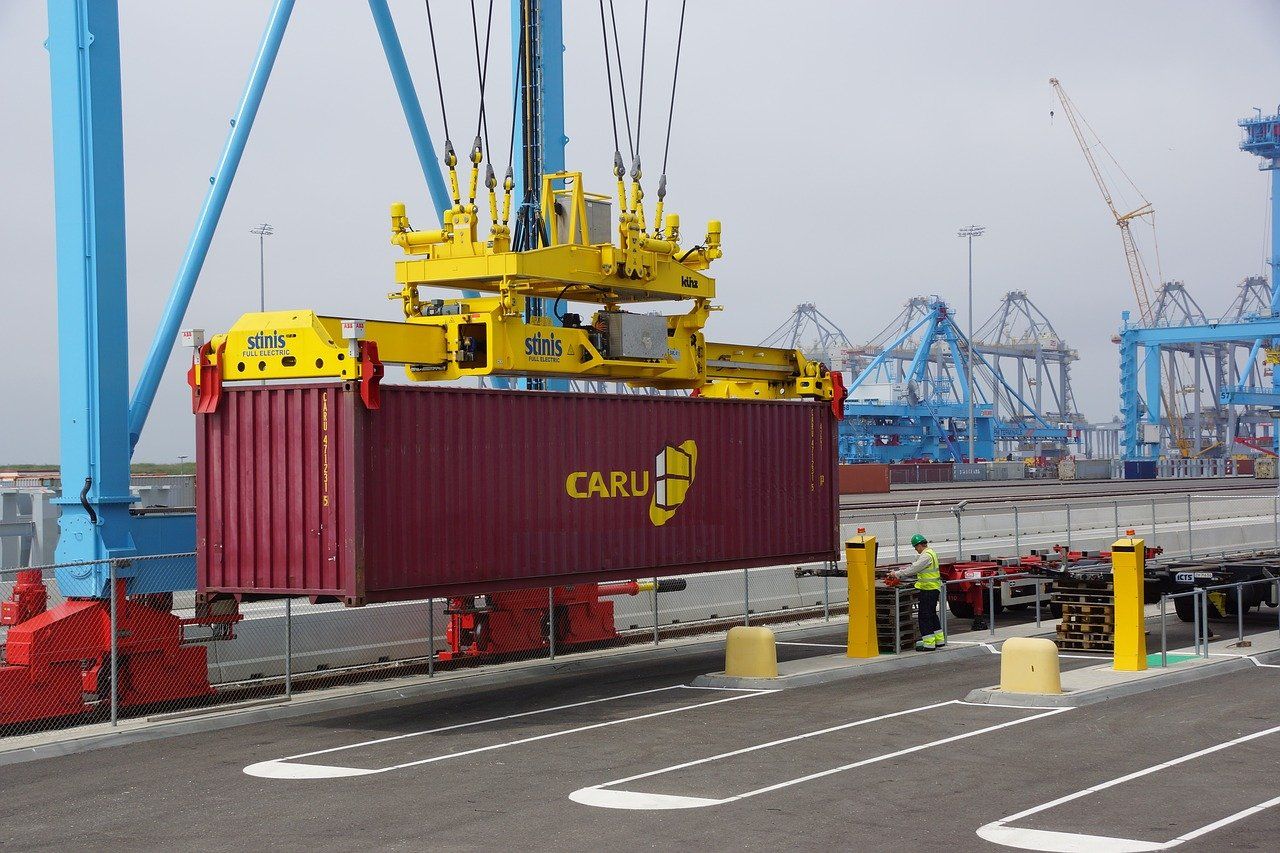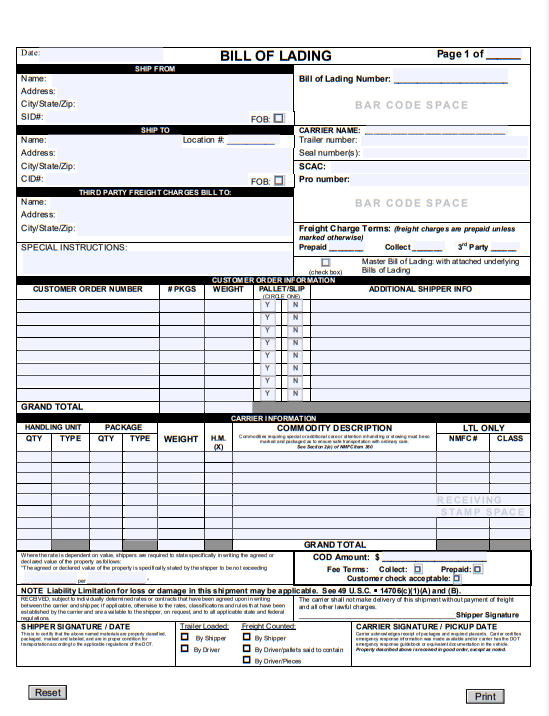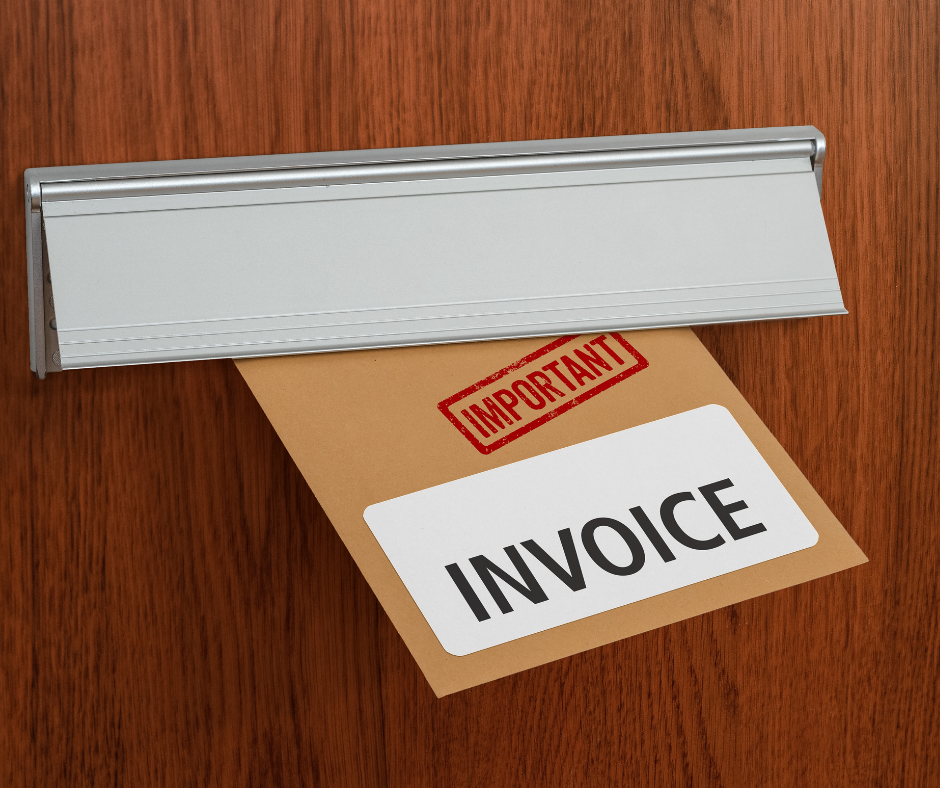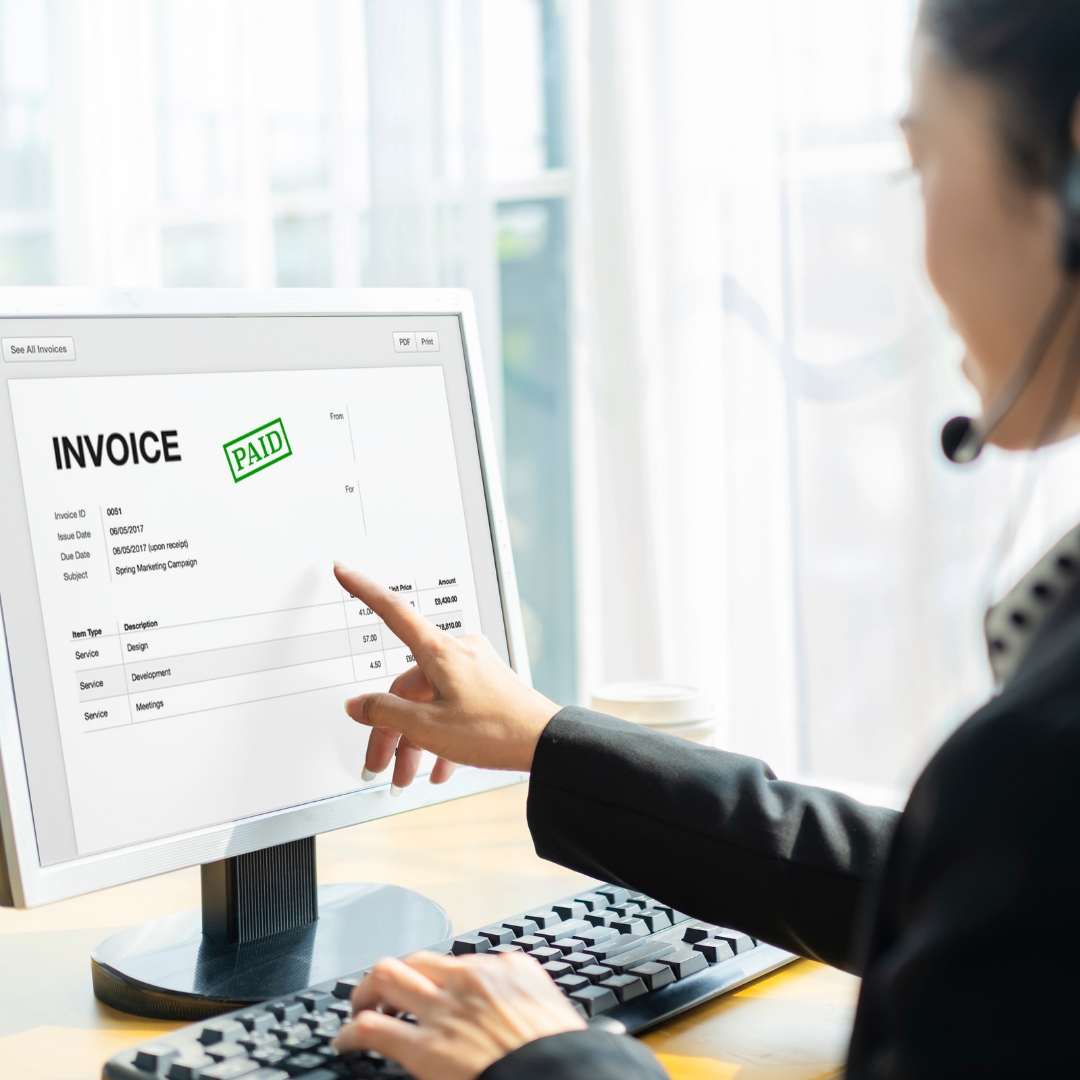Let us ask you a simple question on international shipping finance:
Suppose you are a business owner in India and planning to export goods to a buyer in Taiwan. Then, what’s the legal document between the shipper (exporter/seller agent) and the carrier (importer/shipping/logistics)?
Any guesses?
It's called— ‘Bill of Lading’ or 'Shipping Invoice.’
Modern tools like ERP.AI can automate the creation, tracking, and validation of shipping invoices, helping businesses streamline cross-border documentation, reduce errors, and ensure faster, compliant international trade transactions.
Today’s guide is all about Shipping Invoices. We will learn thoroughly about shipping invoices and their related concepts.
What’s Bill of Lading?
A bill of lading or shipping invoice is an accounting legal document that outlines the information of a freight shipment. A carrier issues this invoice to the shipper, detailing the details about the transported items. It includes— the type of goods, product names, volume, purchase price, and destination of the items.
When the items reach this stage, the bill of lading serves as a shipment receipt. In other words, the bill of lading works as a binding agreement between the freight supplier and the shipper.
Furthermore, an authorized officer from the carrier, the shipper, must sign this form. In addition, regardless of the manner of delivery, the recipient must accompany the transported products.
Understanding Bill of Lading
A shipping invoice or a bill of lading (BoL or BL) is commonly employed in international trade. The process of putting cargo onto a ship is termed as 'lading' in this context.

As previously discussed, a bill of lading is a legally binding agreement that helps to keep carriers and shippers on the same page. It operates as a contract that includes all necessary information based on the shipment process.
To avoid fraud, every enterprise must have an internal controls system. Further, Internal control includes role separation. It simply means that it prevents one person from holding too much authority within an organization.
Furthermore, most internal control systems adhere to a set of core beliefs that have evolved into conventional management practices. Additionally, internal controls can aid in the streamlining of operations and the prevention of theft.
Therefore, a bill of lading is one of several crucial documents that must be carefully stored and scrutinized to prevent asset fraud.
Purpose of Bill of Lading
There are three main uses and objectives of a bill of lading. Let’s check.
1. Works as a title document that specifies goods listed on the bill of lading
2. Serves as a receipt of shipped products
3. Encapsulates the agreed-upon terms and conditions for the shipment of the goods.
Significance of Shipping Invoice
Shipping Invoice works as a legally binding contract that offers safety and security to both involved parties. It simply means that if any discrepancy occurs between carrier and shipper. Then, they could seek the litigation approach with the help of shipping invoice documents.
In essence, a bill of lading serves as an irrefutable confirmation of transportation. A bill of lading also provides for the separation of tasks, which is an important aspect of a company's internal control framework for preventing theft.
Elements to Include in Shipping Invoice
Every bill of lading must have the relevant information to prevent inefficiencies and confusion. Furthermore, a shipping invoice document comprises certain elements that provide detailed information on the bill of lading.
Following we have provided a breakdown of elements included in the shipping invoice. Let’s check:
Name and Contact Details of Shipper
Make sure the bill of lading includes your company's name and logo. Also, you have to make sure to include your accurate mailing address, contact information, and email address in the shipping invoice.
Moreover, if you have a website, then you can also add a link to the shipping invoice. Your buyer and the carrier will need all of this information to contact you.
Name and Contact Details of Receiver
The receiver's name must also appear on the bill of lading. If your customer is a company, you should mention the firm name as well as the name of the contact person. You'll also need a physical address, contact information, and an email address. These are the information that the carrier will need to deliver the package to your customer.
Name and Contact Details of Carrier
The bill of lading must include all of the carriers' names and addresses. This is crucial in determining who is in charge of the shipment and who has received it.
Reference Number or Purchase Order Number’
The bill of lading must also include the purchase order number, or any other internal invoicing identity linked with the cargo. It will be easier to trace and correlate shipments to specific orders if you include the purchase order number.
Furthermore, they're also utilized as reference points for determining whether a package should be accepted or discharged for pickup at the destination.
Goods Details and Description
What can and cannot be delivered across state lines and country boundaries is governed by laws. To avoid any delays and complications with your cargo, including the quantity, description of products, unit price, and the total value of each line item on your bill of lading.
Freight Designation and Details
Make sure you fill out the bill of lading properly, including the weight, size, ease of processing, and value of your consignment.
You must, for example, identify whether the consignment contains any hazardous chemicals. It is because hazardous materials require specific handling. To calculate taxes and fees on your items and clear them through customs, you'll need all of this information.
Pick Up Date
This is the date when the items are picked up by the carrier and the duty for their safety is handed over to them. Further, this date will be used to track your package as a starting point. It's also used to sync up shipments' invoices.
Type of Packaging
There are certain kinds of materials used for items when it comes to packaging. It includes cartons, crates, pallets, or barrels. These elements should be listed on the bill of lading.
Delivery and Notes Instructions
Special notes about the consignment can be provided to the carrier in a column on the bill of lading. This part is critical to the order's effective delivery.
Moreover, this is where you can provide the shipping business requests or special instructions. It could range from "call the recipient to pick up" to "deliver after 3 p.m. only."
Types of Shipping Invoice
You will find certain kinds of free or paid shipping invoices for your business. However, we've included a list of the most common sorts of shipping invoices. Let’s learn:
Pro-Forma Invoice
Customers are provided a projected bill of sale, also known as a preliminary bill of sale, ahead of the shipment or transport of products.
The invoice will usually include a breakdown of the things purchased as well as other critical details such as shipping volume and transportation fees.
Standard Invoice
It is the most common type of invoice format used by small businesses. This kind is issued by a business and presented to a client.
The standard invoice contains information such as invoice number, business name, client’s name, the contact information of both parties, and payment owned by the client.
Commercial Invoice
In international trade and maritime freight shipping, commercial invoice is one of the most crucial documents.
Furthermore, in an overseas shipment, it serves as a legal contract provided by the supplier (exporter) to the buyer (importer). And it functions as an agreement and proof of purchase between the buyer and seller.
Debit Invoice
A debit invoice, also referred to as a debit memo, is sent by a corporation that needs to collect money from a customer. Debit invoices can be useful for small firms and freelancers that need to make a modest update to an existing bill.
Credit Invoice
A credit invoice also referred to as a credit memo, is a document that outlines a refund or credit on an invoice. And, it’s sent by a company that has to provide a refund or discount to a customer or to repair a prior invoicing inaccuracy.
Mixed Invoice
Credit and debit charges are combined on a single invoice, and the total amount might be stated as a positive or negative figure.
Small businesses rarely need to issue mixed invoices for their services, but it may be essential if you're lowering the amount owed for one of the projects you're charging for while increasing the amount owed for another project invoiced on the same invoice.
Steps to Generate a Shipping Invoice
To create an efficient shipping invoice, follow the below-mentioned steps:
1. Download a Customizable Invoice
This is the first step of generating a shipping invoice. You will get certain free customizable invoices such as Deskera Invoice templates.
2. Include Information of Buyer and Seller
Once you download the invoice template, then start adding information. It includes seller and buyer details such as name, contact information, email address, website links, and more. In addition, make sure to add buyer information such as shipping address.
Remember: If the billing address and shipping address vary, you should contact the vendor immediately.
3. Include Shipment Information
You must mention the date, time, location (origin), and destination in this step. Moreover, make sure to have an invoice number as it helps in tracking the package.
Note that your invoice number should be unique and differ from other packages units. To successfully do that— make sure to implement sequential numbers for your invoices.
4. Include a Customer Reference Number
A client reference number must be included in addition to the invoice numbers. Buyers can call this number to check on their orders, ask questions, or return things purchased from the company.
5. Terms and Conditions of Payment
In this crucial step, the information outlines fundamental payment terms and conditions. It states that both sellers and buyers have consented regarding payment. In addition, you must mention payment methods such as check, cash, card, or net banking in your invoice.
6. Include Item Descriptions
You must offer a brief description of all the things that have been shipped. It could be:
- Type of container (either box or envelope)
- Gross weight of containers
- Quantity of the product
- Price per unit
7. Add Quantity of Product and Measure Unit
You must provide the total number of items listed in your purchasing list. The overall net and gross quantities of all line items must be specified and delivered.
8. Include Shipment Process
You must choose the manner through which your goods will be delivered at this stage. It can take the shape of air, sea, or land transportation.
9. Provide Price and Value
It is necessary to input the total amount for the shipment, along with the total commercial value. In a nutshell, it is the overall cost of the shipping.
10. Include Additional Charges
Lastly, this section must include additional charges that customers need to pay. It includes insurance service pricing, taxes, export transit, and shipping services, and so on. Now you just have to sum up the total charges, including the special services price.
So, these are the basic methods for making invoices using free shipping invoice templates on the market.
Shipping Invoices Versus Commercial Invoices
Following we have discussed differences between shipping invoices and commercial invoices. Have a look:
Shipping Invoice:
A shipping invoice template lists the items dispatched from a company to the buyer, as well as the service charges and the list of objects being transported.
Further, trucking invoices and freight invoices are common terms for shipping invoices. A business owner or organization, on the other hand, likes to refer to it as a shipping invoice to avoid any confusion among customers.
Commercial Invoice:
A commercial invoice is a contractual document that details the transaction between a supplier and an enterprise or third-party purchaser.
In order to create a commercial invoice, you must properly define the sold products as well as the amount owed to the clients. Further, customs authorities utilize the commercial invoice as one of the primary documents in establishing customs duties.
A commercial invoice differs from a shipping invoice in two ways:
First, despite serving as an agreement and proof of sale between the importer and exporter, a commercial invoice does not function as a title of ownership.
Second, a business invoice is generated solely to identify the products being sent, which is necessary by customs in order to determine the shipment's worth. Based on the evaluation, taxes and duties are applied.
Example of Bill of Lading
A shipping invoice template contains the entire description or characteristics of the shipment, as well as payment options. In comparison to other commercial bills, shipping invoices are more detailed. It is frequently more thorough than the standard bills for clients.
Furthermore, the items and services that the business owner is intended to be aware of during the ship are detailed in shipping invoices. They contain detailed information regarding the shipment's size, weight, packaging, and contents.
The following shipping invoice example will assist you in better understanding all of the information that must be included when sending products internationally:

How AI Improves Financial Management
With AI platforms, businesses can streamline processes such as expense tracking, invoicing, budgeting, and forecasting. AI algorithms analyze historical and real-time financial data to identify trends, detect anomalies, and support smarter decision-making.
This leads to better cash flow visibility, improved compliance, and faster month-end closings. By reducing manual errors and enhancing data accuracy, AI empowers finance teams to focus more on strategic planning and less on routine operations.
Frequently Asked Questions (FAQs) on Shipping Invoice
Following we have discussed some crucial frequently asked questions (FAQs) on Shipping Invoice. Let’s check:
Que 1: What’s Service Level?
A shipper's service level is the sort of shipping service they choose depending on criteria like destination, speed, specialty services, and so on.
Que 2: What is Bill of Exchange?
In international commerce, a bill of exchange is a legally binding contract issued by the seller or exporter and delivered to the buyer or importer.
Moreover, it legally obligates the buyer to pay the seller an agreed-upon amount of money on a given date, usually upon delivery of goods or on a specific day after the delivery of goods.
Que 3: What’s a high-cost surcharge?
A high-cost surcharge is a price levied on freight shipments that pass through densely populated locations, generally large cities that are more challenging to handle for the carrier. The ZIP code determines the surcharge, which is distinct for each carrier.
Que 4: Is there an invoice number on a proforma invoice?
No. Proforma invoices do not have an invoice number. The invoice number is employed to complete contractually binding calculations. After a proforma invoice has been approved, a finished invoice with an invoice number should be generated.
How Deskera Can Assist You?
Being in the position of a business owner is definitely a challenging role. And, you have to do multiple tasks apart from just delivering bills. Therefore, it is important to choose the right software services to run a seamless and efficient business.
Better Invoicing with Deskera!
Try Deskera Services to alleviate your business workload. For a range of sectors, use free, downloadable, and customizable invoice templates, automated invoicing, billing, expenses, payments, accounting, recording all deposits, and much more.
We're here to help you with the process of growing your company.
Get your Free Trial Today. Click the link below to learn more!
Final Takeaways
Finally, we have reached the final section of this detailed guide. Let’s check some crucial points that will help you for future reference:
- A bill of lading or shipping invoice is an accounting legal document that outlines the information of a freight shipment.
- A shipping invoice or a bill of lading (BoL or BL) is commonly employed in international trade.
- You have to make sure to include your accurate mailing address, contact information, and email address in the shipping invoice.
- You must mention payment methods such as check, cash, card, or net banking in your invoice.
- In comparison to other commercial bills, shipping invoices are more detailed.
- Internal control includes role separation. It simply means that it prevents one person from holding too much authority within an organization.
- A commercial invoice is a contractual document that details the transaction between a supplier and an enterprise or third-party purchaser.
Related Articles












